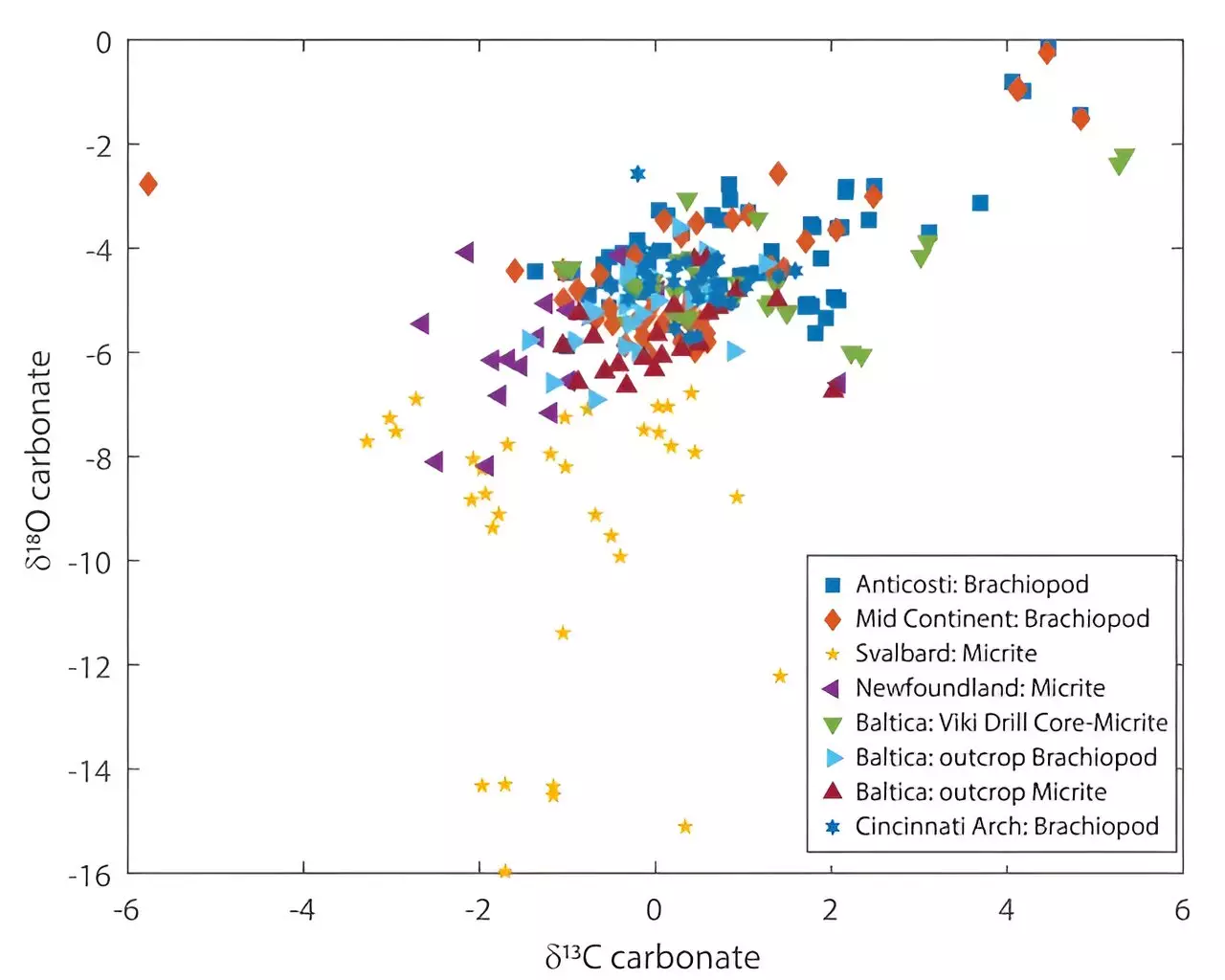For decades, the scientific community has engaged in a robust discussion regarding the changes in oxygen isotope ratios in seawater throughout Earth’s history. A recent study conducted by an international consortium of oceanographers, earth scientists, and marine researchers adds a significant chapter to this discourse. The investigation, published in the *Proceedings of the National Academy of Sciences*, centers on geological samples from the Ordovician era, which is approximately 485 to 444 million years ago. The crux of the debate lies within the ratio of oxygen isotopes, specifically 16O and 18O, often represented as δ18O. This research sheds light on the evolving understanding of Earth’s climatic conditions and their dramatic shifts over millions of years.
The research team undertook a meticulous approach to their analysis, focusing on drill cores sourced from Estonia’s Baltic basin. These cores, combined with surface rock samples, underwent a rigorous examination through a sophisticated technique known as clumped isotope thermometry. This method allows scientists to determine the temperature of seawater by measuring how the isotopes of carbon and oxygen bond together in carbonate minerals, which is heavily influenced by temperature conditions.
The results indicated that during the Ordovician period, the δ18O ratios in seawater were lower and cooler than earlier hypotheses had suggested. This finding lends substantial weight to the theory that shifts in seawater oxygen isotopes have occurred gradually over the past 540 million years, challenging assertions made by some researchers who contend that such ratios remained relatively stable.
The implications of these findings are profound for our understanding of historical ocean temperatures, which have significant consequences for climatology and paleoclimatology. The study suggests that two primary factors contribute to changes in these isotope ratios: hydrothermal alterations, resulting from hot water interacting with specific rock formations, and the weathering of continental crust, albeit to a lesser degree. These insights open avenues for further research into how geological and hydrological processes have influenced Earth’s climate trajectory.
Moreover, the continued debate around the δ18O ratios underscores the need for further exploration and evidence collection. While this recent study provides compelling evidence supporting the idea of gradual change, it stops short of delivering definitive proof. Hence, a call for expanded research efforts remains critical, as scientists strive to piece together the complex puzzle of Earth’s climatic history.
As researchers build on the advancements made in this study, the utilization of modern technologies and methodologies will likely enhance the accuracy of future findings. Exploring additional geological sites and using more refined isotope analysis techniques could verify the preliminary conclusions drawn by the current research team. Each step forward could not only clarify the ongoing debate regarding oxygen isotope ratios but also help paint a clearer picture of Earth’s historical climate and its evolutionary narrative.
This recent study does more than just contribute data; it reignites a vital scientific conversation that has implications for understanding Earth’s complex climate system. By continuing to investigate and analyze the nuances of seawater isotope ratios, the scientific community can inch closer to resolving questions about our planet’s distant past.


Leave a Reply